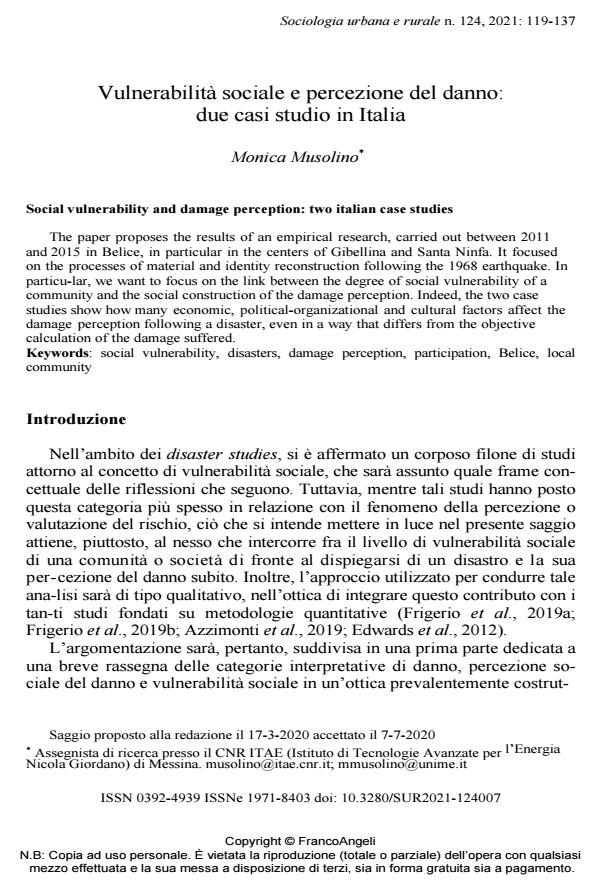Social vulnerability and damage perception: two italian case studies
Journal title SOCIOLOGIA URBANA E RURALE
Author/s Monica Musolino
Publishing Year 2021 Issue 2021/124
Language Italian Pages 19 P. 119-137 File size 252 KB
DOI 10.3280/SUR2021-124007
DOI is like a bar code for intellectual property: to have more infomation
click here
Below, you can see the article first page
If you want to buy this article in PDF format, you can do it, following the instructions to buy download credits

FrancoAngeli is member of Publishers International Linking Association, Inc (PILA), a not-for-profit association which run the CrossRef service enabling links to and from online scholarly content.
The paper proposes the results of an empirical research, carried out between 2011 and 2015 in Belìce, in particular in the centers of Gibellina and Santa Ninfa. It focused on the pro-cesses of material and identity reconstruction following the 1968 earthquake. In particular, we want to focus on the link between the degree of social vulnerability of a community and the social construction of the damage perception. Indeed, the two case studies show how many economic, political-organizational and cultural factors affect the damage perception following a disaster, even in a way that differs from the objective calculation of the damage suffered.
Keywords: Social vulnerability, disasters, damage perception, participation, Belice, local community
Monica Musolino, Vulnerabilità sociale e percezione del danno: due casi studio in Italia in "SOCIOLOGIA URBANA E RURALE" 124/2021, pp 119-137, DOI: 10.3280/SUR2021-124007